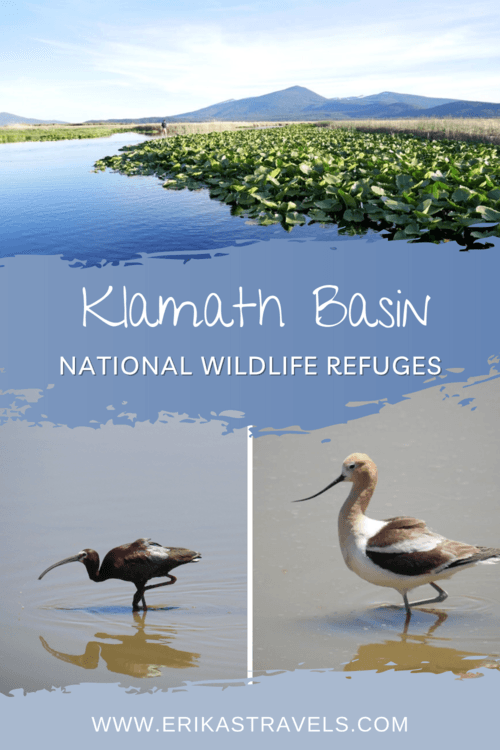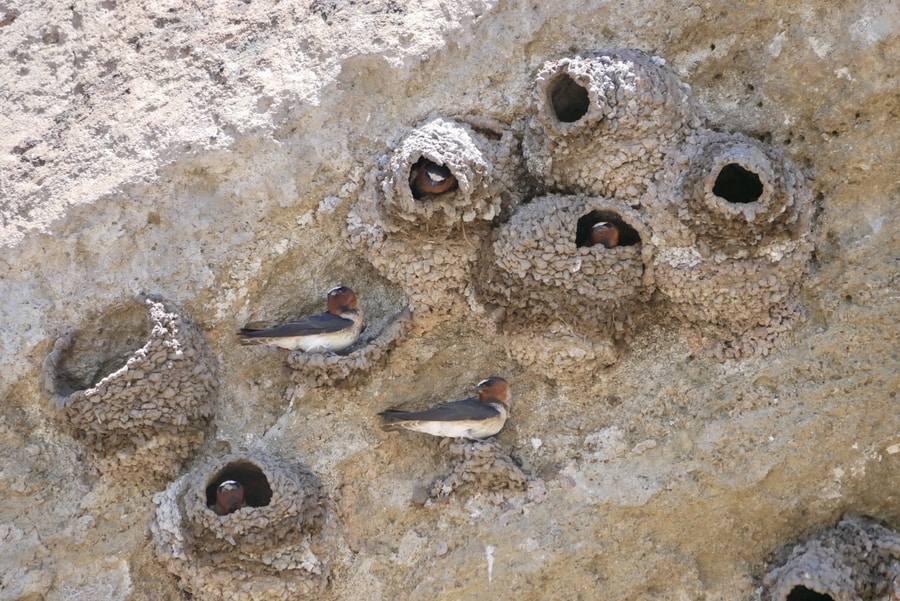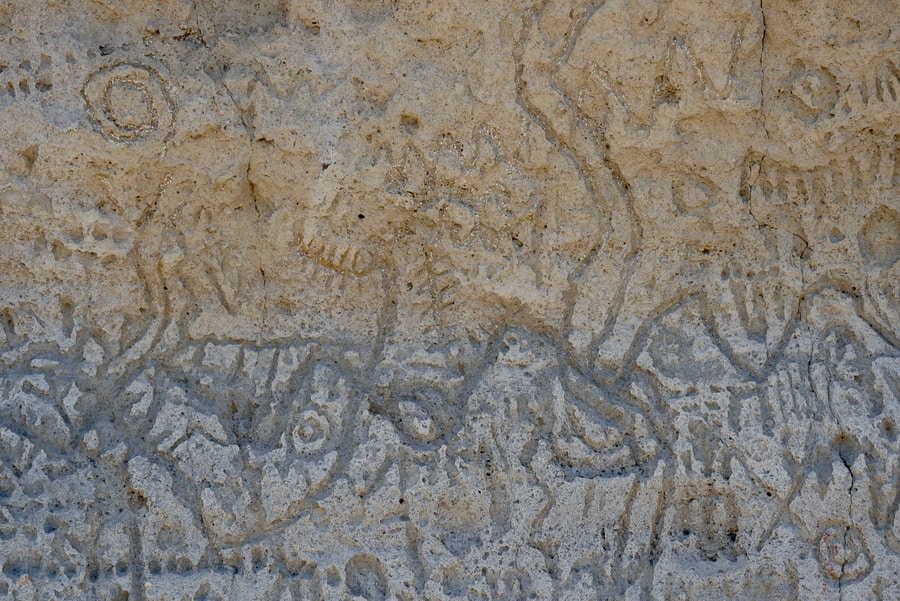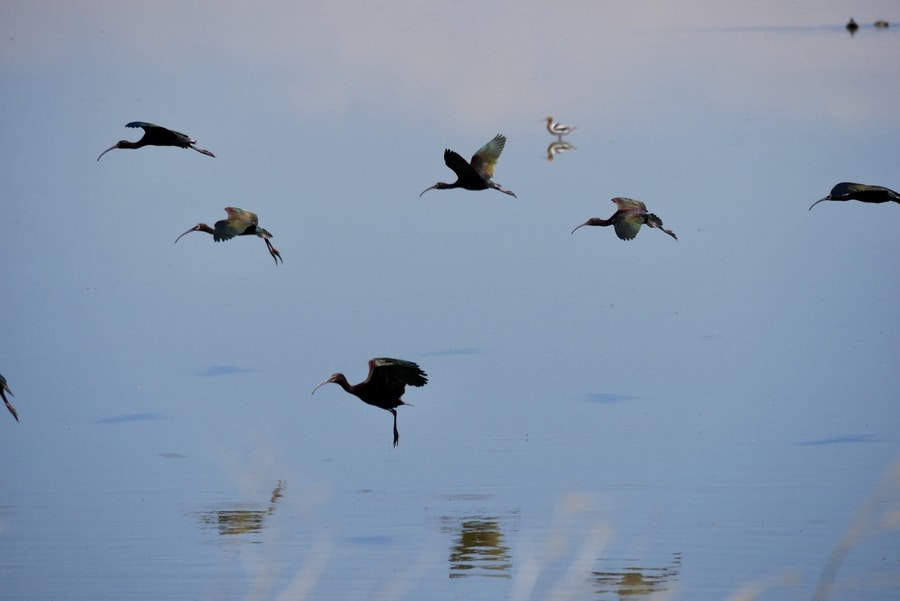
Discovering the Klamath Basin National Wildlife Refuges
The Klamath Basin covers a large swath of northern California and southern Oregon. A relatively undiscovered area, it is among the best birding destinations in the United States. Or so I’m told.
I’m not a birder. Nor do I pretend to be. In fact, during our ‘birding’ trip to the Klamath Basin, Dan and I mostly referred to species with vague descriptive names. We pointed out ‘spindly white birds’ and ‘scoop-beaked birds’ and ‘yellow-headed birds.’
In other words, we had no idea what we were talking about.
But still, as we looked through our binoculars and botched the bird species, we couldn’t help but be entranced by the array of wildlife in the Klamath Basin.
KLAMATH BASIN NATIONAL WILDLIFE REFUGE
The Klamath Basin is a remarkable wildlife-viewing destination. During certain times of year, millions of birds pass through the area as they migrate along the Pacific Flyway.
In order to preserve the unique habitat, President Roosevelt established the first National Wildlife Refuge at Lower Klamath Lake in 1908. The refuge encompasses 81,000 acres of marsh and open water along the Oregon/California border.
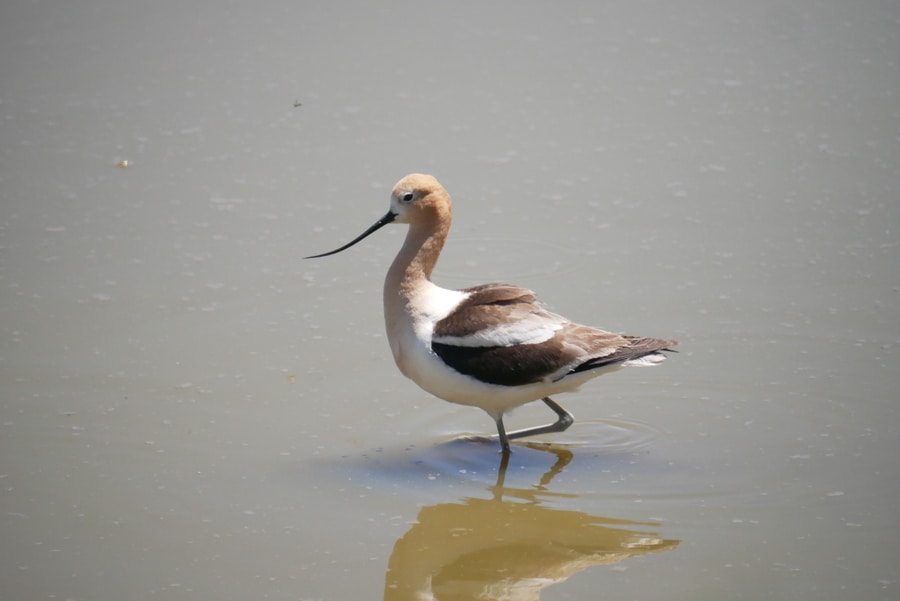
Following the establishment of its first wildlife refuge, the Klamath Basin began receiving increased attention for its remarkable avian habitats.
Now, the area is home to six wildlife refuges that span a large swath of northern California and southern Oregon: Klamath Marsh, Upper Klamath, Bear Valley, Clear Lake, Lower Klamath, and Tule Lake.
TULE LAKE NATIONAL WILDLIFE REFUGE
Dan and I began our Klamath Basin tour with a visit to the Tule Lake National Wildlife Refuge. The refuge—established in 1928 by President Calvin Coolidge—covers 39,116 acres in the Tule Lake basin.
Tule Lake is part of the Klamath Basin National Wildlife Refuge Complex, and is a crucial part of the Pacific Flyway corridor for migratory birds. It is home to pelicans, grebes, swallows, and a wide variety of geese.
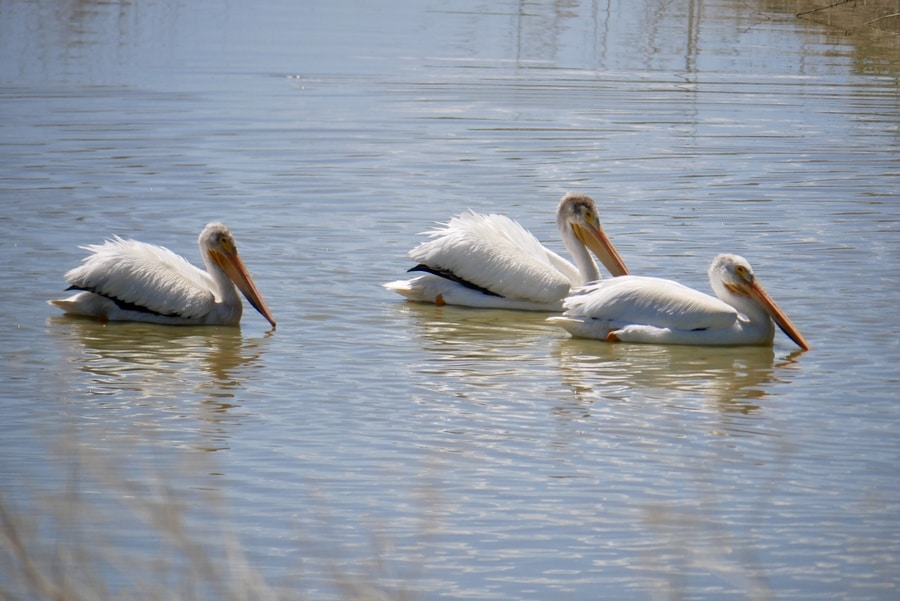
To best experience the area’s bird life, Dan and I embarked on a short driving tour through the refuge. The Tule Lake Auto Route is a self-guided drive that begins near the refuge’s visitor center, on Hill Road. A 9.6 mile unpaved scenic road, it cuts past marshes and lakes as it showcases some of the area’s best avian habitats.
LOWER KLAMATH NATIONAL WILDLIFE REFUGE
The Lower Klamath National Wildlife Refuge lies on the border between California and Oregon. The refuge includes shallow freshwater marshes, open water, grassy uplands, and croplands that are intensively managed to provide foraging and breeding habitat for waterfowl and other animals.
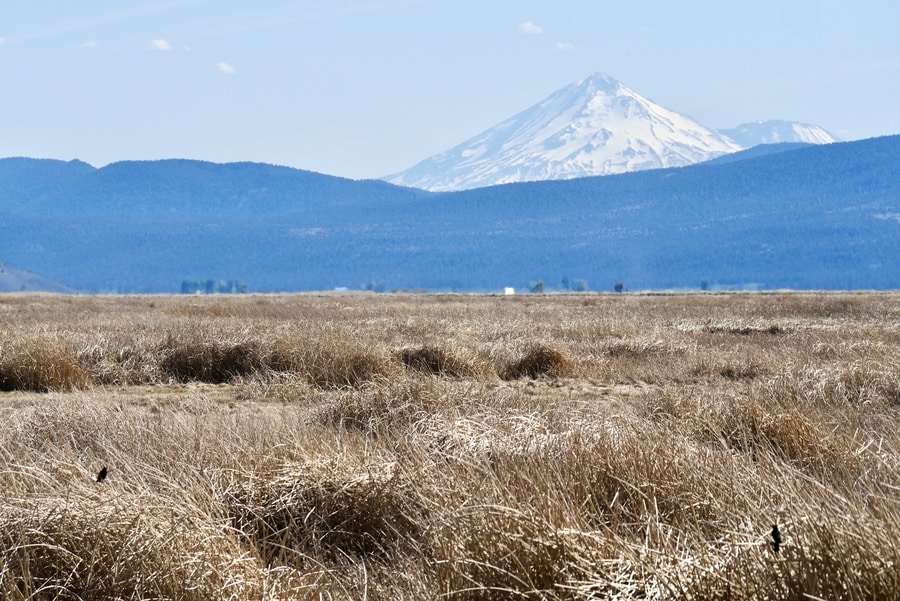
A 10.2 mile driving route—accessible from Highway 126—leads to some of the area’s best bird-viewing areas. Along the way, wildlife observation decks overlook a combination of permanent and seasonal marshes.
During our visit to the Lower Klamath Wildlife Refuge, we found fields of golden grasses that had shriveled under the sun. A few small birds chirped around us, but the numbers didn’t even come close to those at Tule Lake.
Due to the absence of water, we chose to press onward and skip the auto tour of Lower Klamath Lake.
On my next trip to the area, I plan to visit the refuge in winter—when water levels are higher and flocks of eagles descend into the Klamath Basin.
UPPER KLAMATH NATIONAL WILDLIFE REFUGE
The Upper Klamath Wildlife Refuge lies along the northwestern edge of Klamath Lake in Oregon. It boasts 15,000 acres of freshwater marsh and open water.
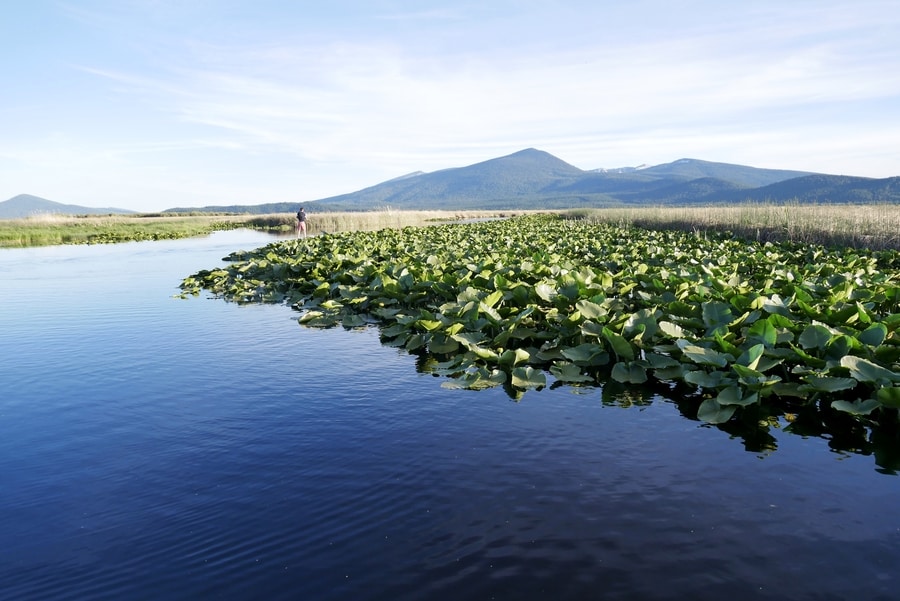
Instead of a driving route, a 9.5 mile canoe trail meanders through the area. Dan and I brought our paddle boards in order to best explore the refuge.
The Upper Klamath Wildlife Refuge provides an opportunity to paddle through marshlands that are ripe with migrating birds. It is a popular nesting and brood rearing area for grebes, terns, herons, bald eagles, and osprey.
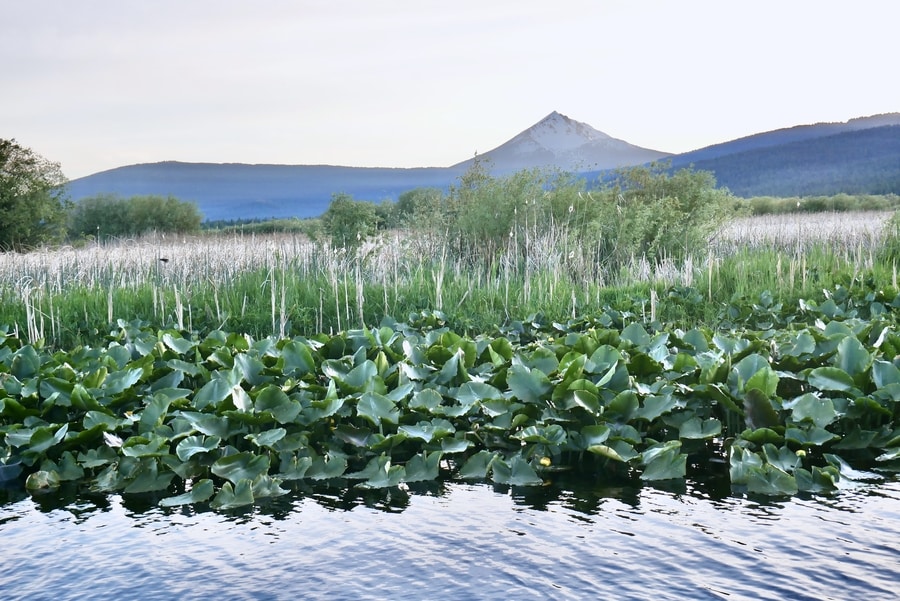
Aside from spotting a few bald eagles and a handful of Red Winged Blackbirds, however, our journey did not result in many bird sightings.
Still, it was a lovely place to spend the afternoon.
We meandered gently through the reed channels and soaked in views of Mount McLaughlin in the background. The marked canoe trail quickly became one of my favorite paddle boarding destinations in Oregon—comparable to some of the best stops along the Cascade Lakes Highway.
OTHER WILDLIFE REFUGES IN THE KLAMATH BASIN
Our trip to the Klamath Basin brought us to three of the area’s six wildlife refuges. The remaining three—Klamath Marsh, Clear Lake, and the Bear Valley—are likewise critical habitats for migrating birds.
Klamath Marsh Refuge: The Klamath Marsh consists of 40,000 acres of meadows and wetlands in Oregon. A large natural marsh, it provides important nesting and feeding habitats for waterfowl.
Clear Lake Refuge: The Clear Lake Refuge in northeastern California contains open water surrounded by over 26,000 acres of upland bunchgrass, low sagebrush, and juniper. Rocky islands in the lake host nesting birds, while the uplands provide habitat for pronghorn antelope, mule deer, and sage grouse.
Except for limited waterfowl and antelope hunting, the refuge is closed to all public access.
Bear Valley National Wildlife Refuge: The Bear Valley Refuge is a small patch of land in southwestern Oregon’s Klamath County. It was established in 1978 as an important nesting spot for bald eagles.
To reduce disturbance to the birds, Bear Valley Refuge is mostly closed to the public.
LAVA BEDS NATIONAL MONUMENT
The Lava Beds National Monument on the California/Oregon border is an important stop along the Klamath Birding Trail. The monument lies along the Volcanic Legacy Scenic Route—an all-American road that link’s Oregon’s Crater Lake National Park with California’s Lassen Peak.
Over the last half-million years, volcanic eruptions on Medicine Lake’s shield volcano have created a rugged landscape dotted with diverse volcanic features. American rock art sites and historic battlefields litter the area.
California’s Lava Beds National Monument is an exciting place to explore. Geologically, the area reminded us of the Newberry Crater National Monument in Central Oregon.
Its most popular attractions are underground lava tubes that provide ample opportunity for adventuring.
WHERE TO STAY IN THE KLAMATH BASIN
Klamath Falls is the undeniable hub of the Klamath Basin. A town of over 20,000 residents, it contains an assortment of hotels that range from budget to boutique.
Dan and I didn’t personally stay the night near Klamath Falls, since we visited as a day trip from Eugene. When we researched the area, however, we found a handful of good places to stay. Highly-rated options included the Running Y Ranch Resort and the Worldmark Running Y.
For travelers coming from Crater Lake, a few additional options can be found in Chiloquin.
WATER RIGHTS IN THE KLAMATH BASIN
The Klamath Basin is a largely agricultural region. More than 1,200 family farms rely on water from the area’s federally-operated system of dams, canals, and reservoirs.
Yet farmers are far from the only ones who rely on the area’s diminishing water supply.
Members of the Klamath Tribes need water to protect two species of endangered and culturally-important sucker fish. With record low inflows, water can’t be released without risking extinction for the struggling fish.
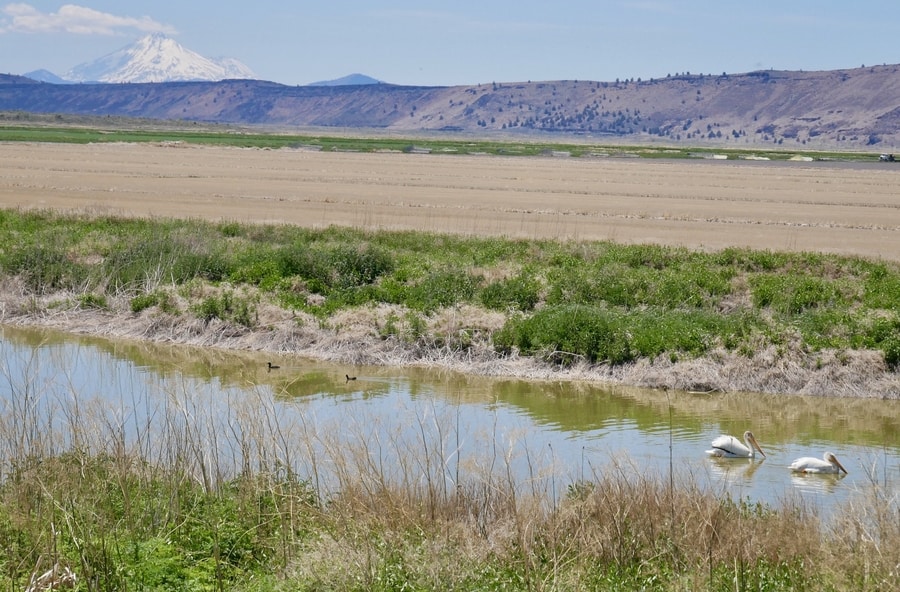
Access to water is a continual point of contention between the Klamath Basin’s farmers, conservationists, and Native tribes. The years-long drought in the region has exacerbated tensions surrounding water rights that have long simmered under the surface.
The Klamath Water Crisis presents no easy answers. Until drought-like conditions subside, resolution will be difficult to find.
****
The Klamath Basin is a year-round destination for bird-lovers. And each season brings new opportunities for discovery.
In spring and fall, millions of waterfowl populate the basin as they make their way along the Pacific Flyway. In winter, the basin boasts the largest population of eagles in the continental United States.
With ever-changing wildlife-viewing opportunities, Dan and I know that we’ll return.
And next time, we’ll hopefully be more equipped to decipher what we’re seeing through our binoculars.
_________________________________________________
Did You Enjoy this Guide to the Klamath Basin? Pin It!
